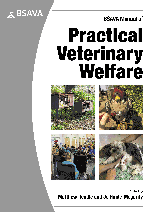
Full text loading...

The fear and anticipated discomfort patients often experience at, and associate with, the veterinary practice can make handling and treating them difficult and/or dangerous. Distressed patients can have compromised immune systems, longer recovery times from disease or surgery and increased risk of anaesthetic complications. However, with thoughtful planning of each area of the clinic, an understanding of the animal’s perspective, and staff awareness of low-stress handling and restraint methods, a patient’s experience of the clinic can be much more positive.
Optimizing animal welfare in clinical practice, Page 1 of 1
< Previous page | Next page > /docserver/preview/fulltext/10.22233/9781910443798/BSAVA_Manual_Welfare_1_9781910443798.7.166-193-1.gif

Full text loading...









































